
The week opened under a cloud of fiscal anxiety as Moody’s, the last of the major credit rating agencies to do so, downgraded the United States’ sovereign credit rating from AAA to Aa1.
While the new rating still suggests a high-quality borrower, the shift carries weight beyond the surface. For decades, U.S. Treasuries stood as the benchmark for global safety, a virtually risk-free asset that underpinned the pricing of credit around the world. That reputation now faces a reckoning.
Markets have responded with cautious unease. In after-hours trading, the yield on the benchmark 10-year U.S. Treasury rose to 4.48%, as traders began pricing in the increased risk premium. The SPDR S&P 500 ETF slid 0.4%—a modest pullback, but one that signals a larger undercurrent of concern. Equity markets do not yet reflect panic, but the slow burn of distrust has begun.
The reasons behind the downgrade are well documented. U.S. federal debt is projected to rise from 98% of GDP in 2024 to 134% by 2035. At the same time, the annual deficit is forecasted to widen from $1.8 trillion to $2.9 trillion over the next decade. These figures place the U.S. far above other developed economies with similar ratings, making it harder for rating agencies to justify the top-tier status.
The downgrade adds pressure to a Treasury market already reeling from rising issuance and softening foreign demand. Countries that once absorbed American debt as a matter of routine are no longer as eager. In the background, global realignments are also at play—shifts in trade, tensions over tariffs, and the rise of alternative reserve currencies have slowly chipped away at U.S. dominance in the financial hierarchy.
For the everyday borrower, the implications are tangible. Treasury yields influence everything from mortgage rates to student loan terms. If institutional traders demand greater returns for the risk of lending to the U.S., banks and lenders will inevitably pass those costs down to households and businesses. Even a small uptick in yield curves can translate to hundreds of billions in added debt servicing costs over time. The result is tighter consumer credit, pricier capital, and diminished room for government stimulus during future downturns.
Politically, the downgrade underscores the growing dysfunction in Washington. Moody’s had issued warnings as early as November, citing the U.S. government’s inability to navigate debt ceiling standoffs or enact sustainable fiscal reform. The ousting of Speaker Kevin McCarthy in 2023, followed by prolonged gridlock in Congress, illustrated a broader failure to govern. Compounding the problem are looming questions about the Federal Reserve’s independence. Former President Trump’s remarks about dismissing Jerome Powell and reshaping the central bank’s policy agenda have raised eyebrows among global traders.
Fiscal policy, too, remains on a path of contradiction. Trump’s proposal to extend the 2017 Tax Cuts and Jobs Act would reduce federal revenue by $4 trillion over ten years. Even paired with sharp cuts to Medicaid and food assistance, the plan would add $3.3 trillion to the national debt. The Department of Government Efficiency, a cornerstone of his administration’s strategy to streamline spending, has reportedly failed to meet its initial benchmarks.
In this environment, the U.S. risks drifting into a debt spiral. As interest payments rise, the share of the federal budget allocated to debt servicing grows, leaving less room for essential spending on infrastructure, education, and healthcare. Traders are already reacting. Bond yields are climbing. Equity markets are wobbly. Even the dollar—though still dominant—faces pressure as other economies begin to decouple from traditional U.S.-centric models.
The next few sessions could be telling. If the 10-year yield continues its climb past 4.5%, equity volatility may follow. Defensive sectors like utilities and healthcare may see inflows, while high-growth tech could suffer from sensitivity to interest rate changes.
Market Movements of the Week
As fiscal concerns cast a long shadow, price action across key assets this week has turned cautious, even twitchy. Traders are entering a pivotal stretch where every move, every test of resistance or support, feels weightier than before. The downgrade of U.S. debt by Moody’s has acted less like a hammer blow and more like an unraveling thread—subtle, but deeply felt across chart patterns and technical zones. Markets are responding not with panic, but with sharpened sensitivity.
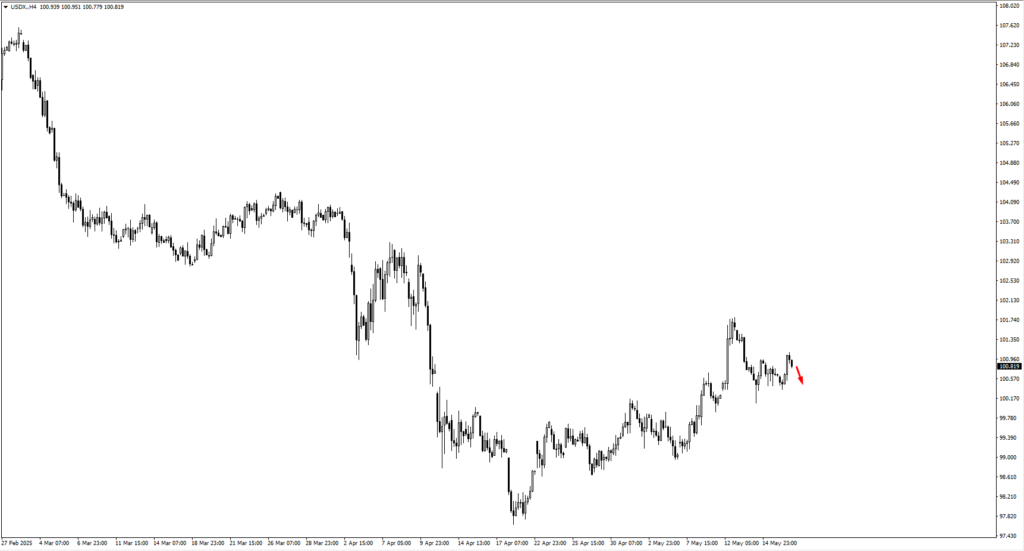
The USD Index (USDX) sits on a tightrope. After sliding toward the 100.60 level, price action here has become critical. A rejection could see the dollar push back toward 101.40 and even 102.40—but such upside is unlikely unless sentiment stabilises. If downside momentum takes over, the 99.80 zone may come into play next, hinting at a broader consolidation that could spill over into risk assets. With U.S. credit strength now under scrutiny, the dollar’s role as a safe haven is being tested.
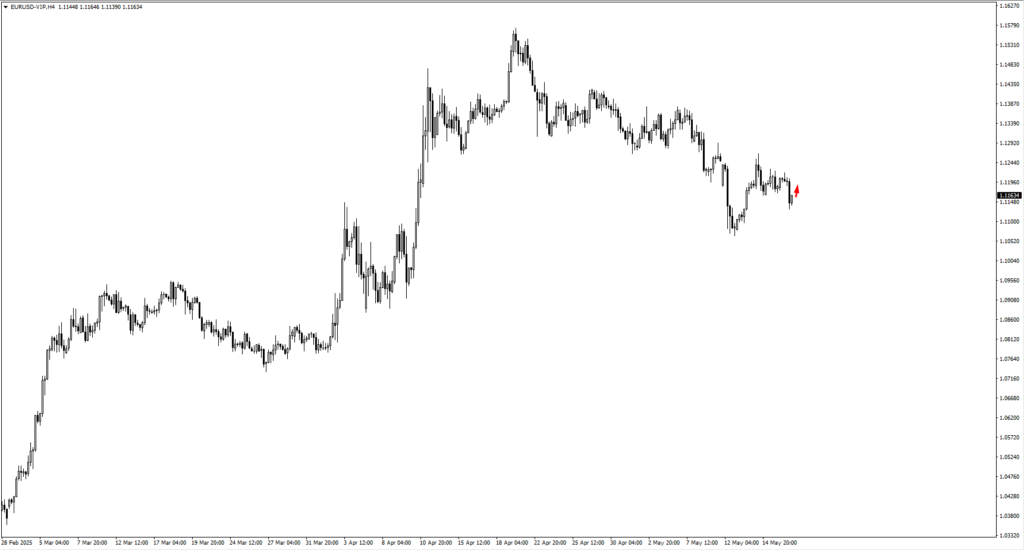
EURUSD is pressing higher, brushing against the 1.1195 resistance. Traders will be watching closely for any reversal patterns here. If price fails to break cleanly, support may be sought again at 1.1105, a familiar foothold. A sustained move above 1.1300, however, would hint at a bigger directional play—perhaps in anticipation of weaker U.S. macro prints or rate outlook revisions.
GBPUSD is staging its own attempt at higher ground. The 1.3320 level marks the next technical ceiling. If sellers defend this range, bulls may regroup at 1.3215. With UK CPI data due midweek—forecasted at 3.30% y/y compared to the previous 2.60%—volatility in the pair is likely, especially if inflation surprises to the upside. The market is already bracing for a possible rate recalibration.
USDJPY continues its upward grind, though the pair remains cautious near the 145.00 level. A drop toward 144.65 or even 143.80 could be on the cards if risk sentiment falters or Treasury yields pull back. The yen’s safe-haven appeal has been slow to reassert itself, but that could change quickly in the wake of geopolitical or debt-driven fears.
USDCHF, meanwhile, is trapped in a range. The pair is hovering close to key levels, with a possible bullish bounce eyed at 0.8300. Broader sentiment toward Europe’s monetary trajectory and risk flows into the franc will shape its next steps.
AUDUSD found its footing at 0.6370 and now eyes resistance at 0.6425. This week’s Australian cash rate decision looms large, with markets anticipating a cut to 3.85% from 4.10%. Should that scenario unfold, a retracement back toward 0.6295 could materialise. But if support holds amid a dovish surprise, the Aussie might find breathing room to stabilise.
NZDUSD bounced from support at 0.5860. It now tests the 0.5905 zone, but if it loses grip again, traders will look toward a retest of the 0.58459 swing low. The kiwi remains vulnerable, caught in the crosscurrents of commodity sentiment and global demand forecasts.
USDCAD continues its slow rotation. If the pair drifts lower, price action near 1.3940 or 1.3910 could offer renewed support. On the upside, resistance is being eyed at 1.4055 and potentially 1.4140. The Canadian dollar remains tethered to oil’s performance, which brings us to energy markets.
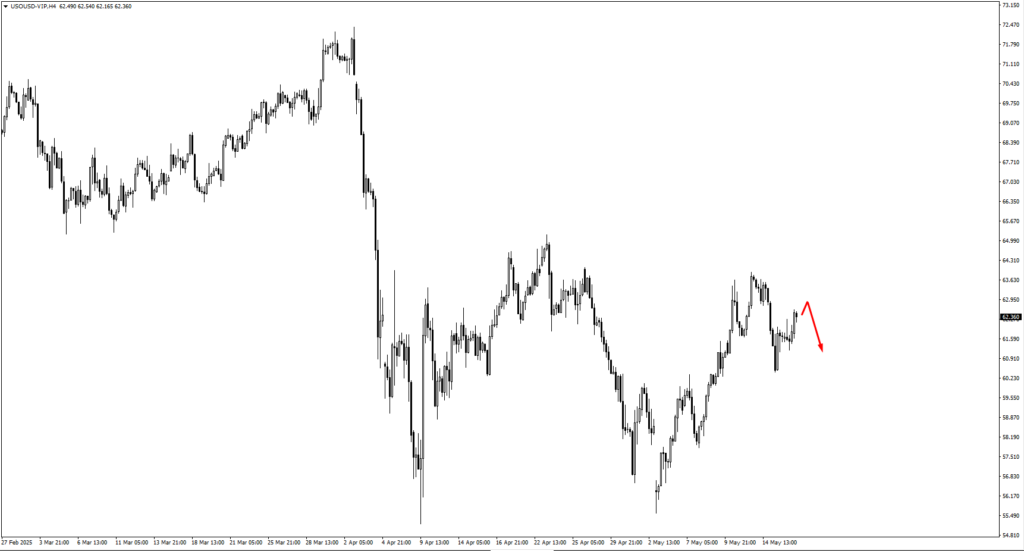
USOil has been consolidating in a tight band. Should price push toward 63.05, sellers may reassert control. The broader energy landscape remains fraught, with demand signals softening even as geopolitical flashpoints—particularly in the Middle East and South China Sea—inject an underlying bid. Still, unless bullish catalysts emerge, oil may struggle to break out of its current range.
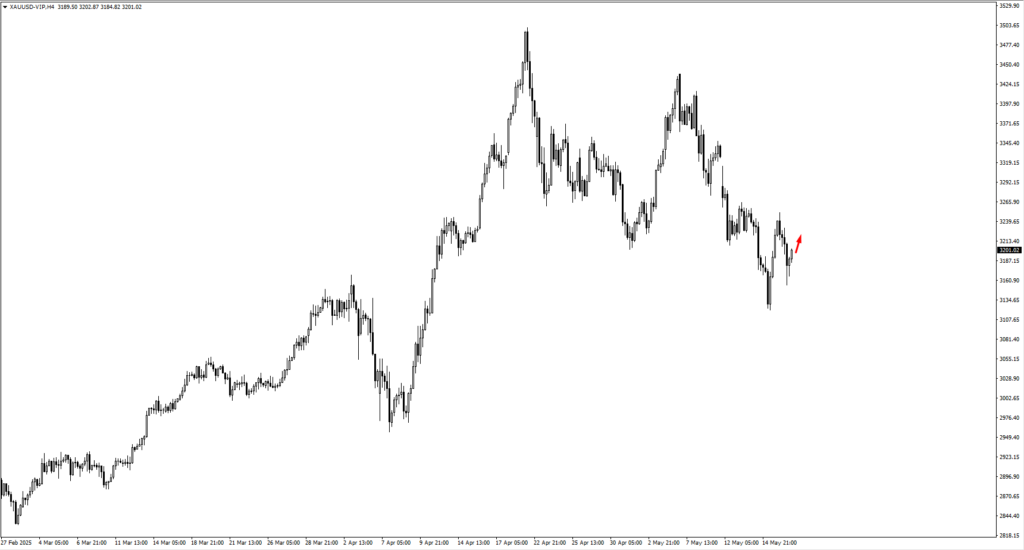
Gold, always the bellwether of fear, staged a sharp rebound from $3154 after pulling back from the $3250 zone. Now trading near $3210, price action here is crucial. A rejection could see it slide back toward the $3120.72 low. But if price consolidates or moves cleanly through $3210, bulls may target a retest of $3270. The metal remains in demand as a hedge, though the dollar’s wavering strength complicates its path.
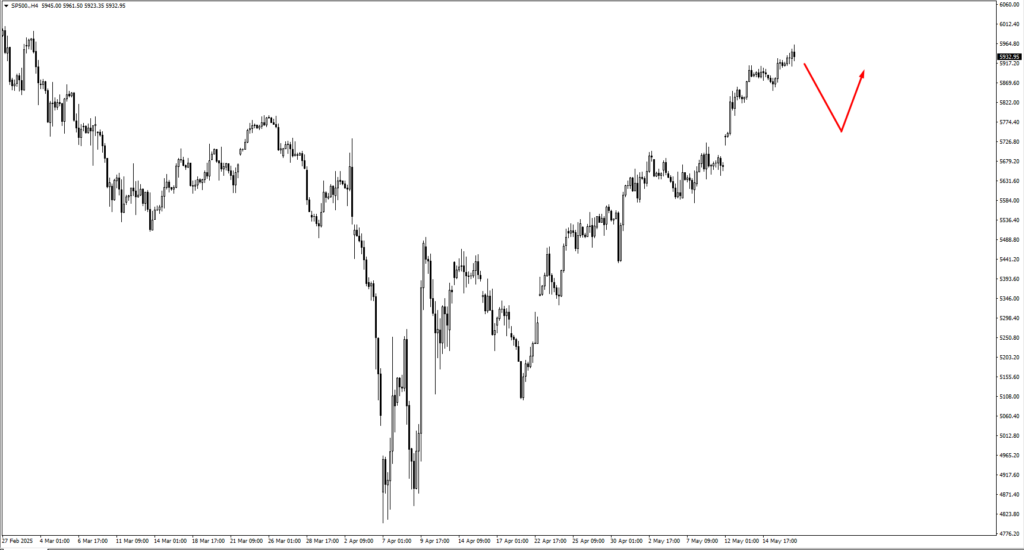
The SP500 is treading carefully after its recent rally. Bullish setups may emerge near 5740 or 5690, but if equities push higher too quickly, a reaction at 6100 could limit upside. With yields rising and the fiscal backdrop turning uncertain, the broader equity market may lack the momentum for a breakout—unless earnings or economic data offer fresh support.
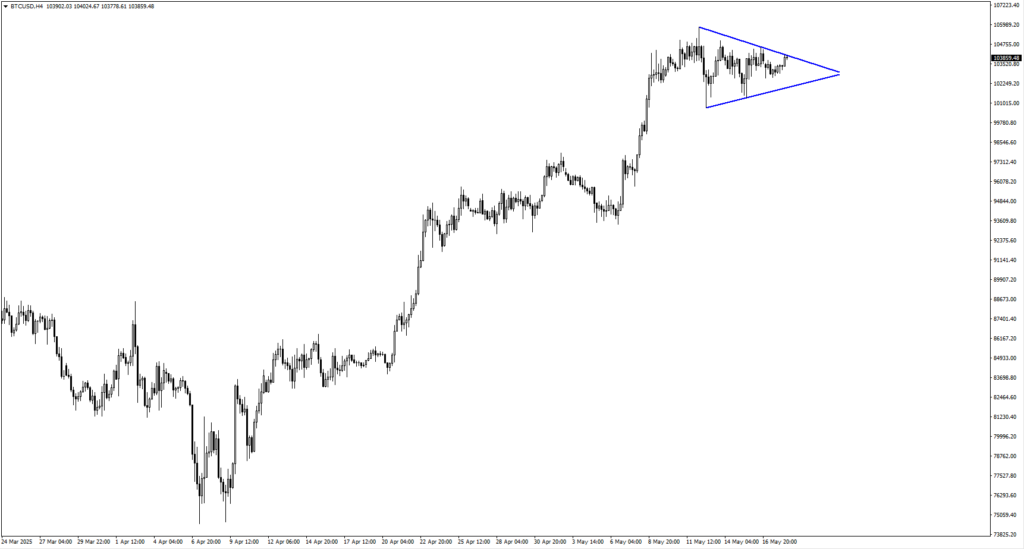
Bitcoin remains compressed, coiling in a narrow range just below $100,000. Key support zones at 99,400 and 96,600 will be watched closely if the digital asset pulls back. A breakout above the current range would bring all-time highs back into focus. Traders remain cautiously optimistic, but positioning has become defensive in anticipation of a macro catalyst.
Natural Gas has continued its decline after peaking at 3.45, and now approaches the 3.02 area. This level may offer support, but with seasonal demand lagging and inventories healthy, any bounce could be short-lived. Weather patterns and storage data will remain critical for short-term direction.
Key Events of the Week
On Tuesday, May 20, the market turned its attention toward the Pacific and North America, with two releases drawing early focus. Australia’s cash rate decision came in with a forecast of 3.85%, down from 4.10% previously. This anticipated rate cut reflects increasing pressure on the RBA to ease financial conditions amid a slower domestic economy. Meanwhile, Canada’s Median CPI y/y was forecast to hold steady at 2.90%, matching the prior figure. Any deviation from this inflation forecast would challenge the Bank of Canada’s stance, but with no surprises expected, the pair held ground, consolidating as markets awaited structural direction. Tuesday’s movements were light but preparatory—zones were marked, and momentum traders kept their entries tight.
On Wednesday, May 21, the spotlight shifted to the United Kingdom, where the CPI y/y was forecast to jump to 3.30%, up from 2.60% previously. This sharp expected rise underscores the lingering stickiness of inflation in the UK economy, particularly in core services. However, with broader economic growth faltering and labour conditions beginning to cool, a spike in inflation might not translate directly into rate hikes. Should the actual figure match or exceed the forecast, short-term momentum may favour GBP strength—but upside would likely be capped without a broader shift in the BoE’s tone.
On Thursday, May 22, a wave of PMI data swept through Europe and the United States, offering a barometer for economic sentiment across sectors. Germany’s flash manufacturing PMI was forecast at 48.8, slightly improved from 48.4 previously, while services PMI was expected to rise to 49.6 from 49.0. Though both remain in contraction territory, the marginal increase hinted at a stabilising tone. In the UK, flash manufacturing PMI was forecast at 46.2 (up from 45.4) and services PMI at 50.0, up from 49.0. This would signal a tentative return to growth in services, though manufacturing continues to lag.
Lastly, the U.S. released its own PMI flash readings: manufacturing expected at 49.9, down from 50.2, and services slightly lower at 50.7 from 50.8. These softer forecasts suggested the Fed may remain in a holding pattern. Thursday shaped up as the most technically active day of the week—tight ranges began to widen, and macro narratives re-entered the charts.









